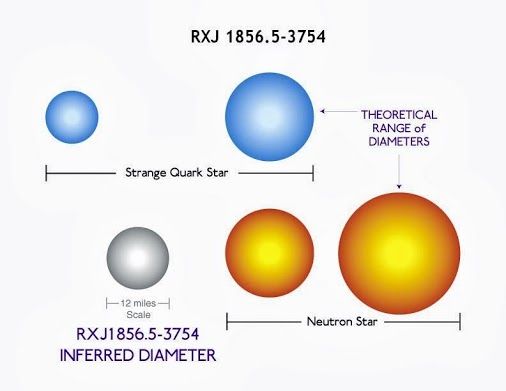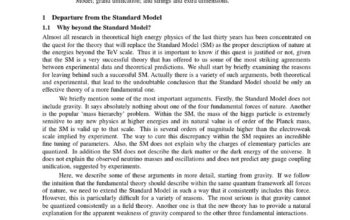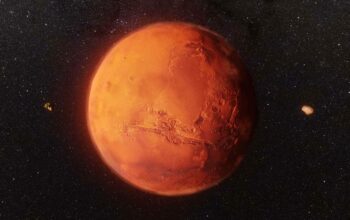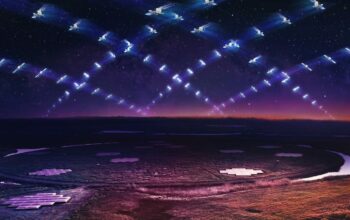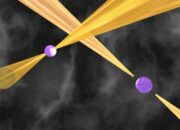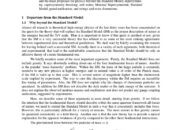The cosmos is replete with enigmas, a vast expanse where phenomena challenge our understanding of physics. Among these celestial wonders are quark stars, enigmatic entities that exist on the fringes of our knowledge of stellar evolution. The notion of stars composed primarily of quark matter transcends conventional wisdom, beckoning us toward an exploration of these hypothetical stellar bodies. Torrid in their nature, quark stars promise an understanding deeper than that which neutron stars offer, raising pivotal questions about the very fabric of matter and the dynamics of extreme gravity.
To apprehend the essence of quark stars, one must first traverse the landscape of stellar evolution. Conventional stars, such as our Sun, undergo nuclear fusion in their cores, producing energy that counterbalances gravitational forces. When a massive star exhausts its nuclear fuel, it succumbs to gravitational collapse. In this cataclysmic event, the core may become a neutron star, a stellar remnant supported by neutron degeneracy pressure. However, should the mass of the collapsing core surpass a critical threshold, conventional physics gives way to a more exotic state of matter: quark matter.
Quark stars emerge in scenarios where the densities become extreme, exceeding the limits of neutronium. In such conditions, the fundamental constituents of neutrons—quarks—are liberated from their baryonic confines. Theoretical calculations suggest that this quark deconfinement results in a state of matter that is coherent yet chaotic, teetering on the edge of our understanding. The prospect of quark stars leads us to a tantalizing metaphor; they are akin to an orchestral crescendo, where the distinct notes of neutrons fade into a cacophony of quarks, producing a resonance that defies traditional melody.
What makes quark stars intriguing extends beyond their state of matter; it lies in their hypothesized properties. These stars are theorized to be smaller yet more massive than neutron stars, an antithesis that brings forth numerous questions in astrophysics. The concept of mass density reaches an apex, with calculations indicating that quark stars could possess a mass of up to three solar masses, all compressed into a mere radius of ten kilometers. The implications of such compactness elicit a vivid image: a sphere of incredible heft, akin to a diamond, condensed into a singularity. The dynamics of such extreme environments would undoubtedly challenge our conceptual frameworks and necessitate the revision of existing models of matter under extreme pressure.
The fundamental nature of quark stars paves the way for distinct observational characteristics. The radiative emissions of these stellar bodies differ significantly from their neutron counterparts. A quark star is theorized to exhibit a distinctive behavior in terms of thermal radiation and gravitational waves. As quark stars cool, they may emit a form of radiation that is more intense and unique compared to the thermal emissions of neutron stars. The study of these emissions could provide an invaluable glimpse into the otherwise hidden aspects of high-energy physics and the fundamental forces governing matter.
Equally fascinating is the potential synthesis of hybrid stars, which harbor both neutron and quark matter. This gradation challenges the binary classification often applied to stellar remnants, prompting a deeper inquiry into the transitional states of matter. The hybrid models propose a continuum of matter phases, which reflects the complexity of the universe itself—a characteristic harmony rather than a stark dichotomy. The pursuit of empirical verification of hybrid stars could enhance our understanding of quantum chromodynamics and the interactions that govern quarks.
Observational astrophysics has, however, encountered complexity when it comes to identifying candidates for quark stars. Despite their theoretical allure, the detection of quark stars remains elusive. Current methodologies, including gravitational wave analysis and electromagnetic observation, have yet to yield definitive signatures of quark matter. While potential candidates, such as certain ultracompact binary systems and peculiar pulsars, have been posited, the astrophysical community must tread carefully. The challenge lies in discerning between what might be quark stars and the plethora of other exotic stellar phenomena in our universe.
The theoretical implications of quark stars ripple through the fabric of cosmology, invoking queries about the ultimate fate of the universe. In scenarios where matter infuses at energy densities exceeding conventional limits, one might ponder the existence of quark stars in the early universe. Such primordial relics could have persisted, potentially offering insights into the conditions of the cosmos during its infancy. These remnants render the study of quark stars not merely an academic endeavor, but a tantalizing quest, inviting contemplation on the origin and evolution of all matter.
Ultimately, the discourse surrounding quark stars is punctuated by an insatiable curiosity, a yearning to push the boundaries of human comprehension. Each theoretical framework propelling the discussion enhances our understanding of extreme matter, while fueling a sense of wonder intrinsic to the study of the universe. In excavating the depths of physical reality, we unravel the narrative of cosmic evolution, where every theory and discovery serves as a thread weaving the tapestry of existence.
As astronomers and physicists converge upon this unfamiliar territory, we ponder: are quark stars harbingers of knowledge that extend beyond our imaginations? In this search for the cosmic truth, we are beckoned toward a frontier that is not only stranger than neutron stars but, indeed, more profound than mere conjecture.
